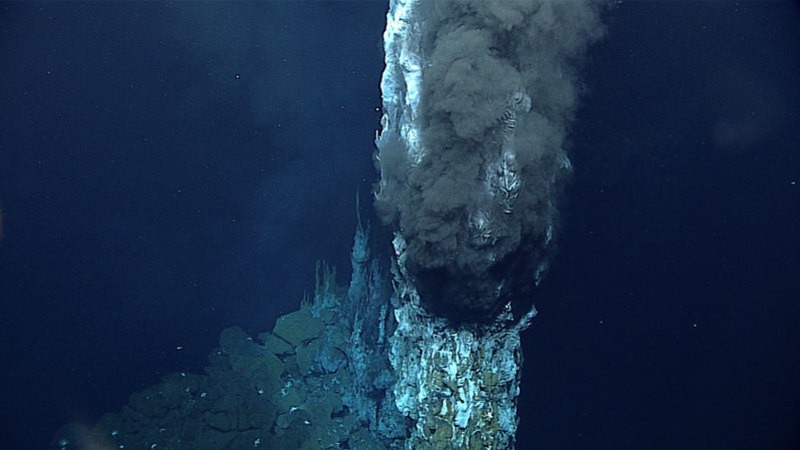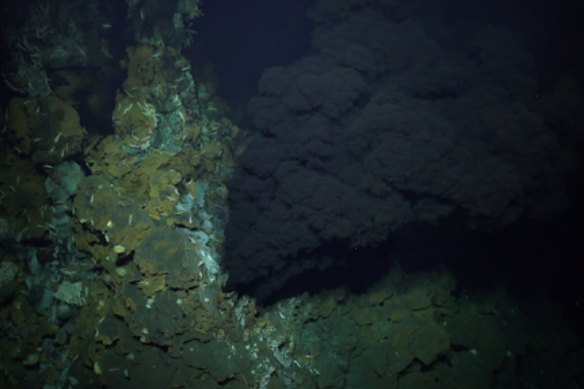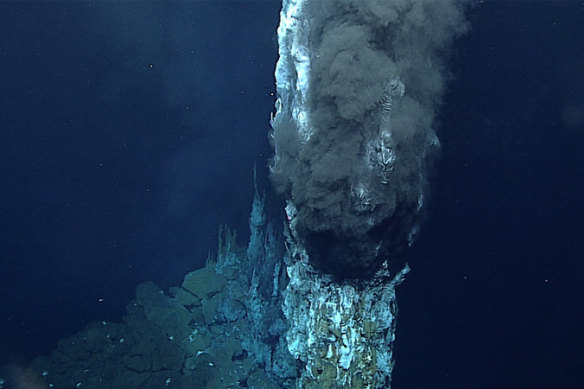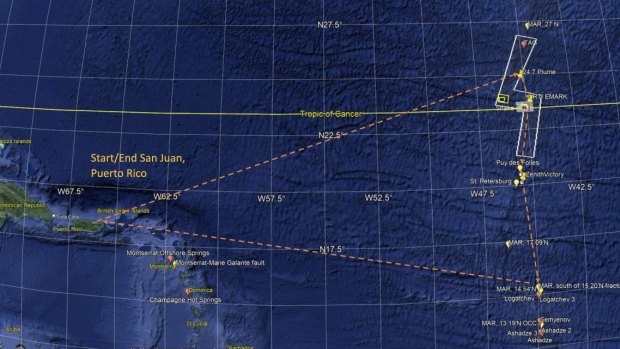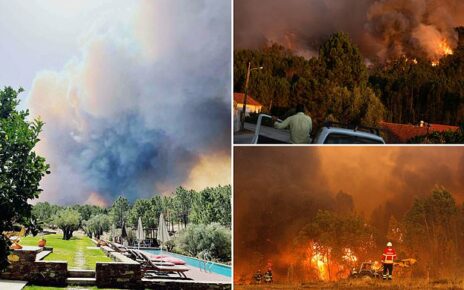Save articles for later
Add articles to your saved list and come back to them any time.
Deep in the ocean, hydrothermal vents can tower up to 60 metres above the seafloor, belching out scalding water warmed by hot magma from underwater volcanoes.
A recent expedition to locate more of these vents yielded a new find: a group of “black smoker” vents emitting water of 340 degrees Celsius along the Mid-Atlantic Ridge near Puerto Rico.
A “black smokers” hydrothermal vent found near Puerto Rico.Credit: NOAA
The discovery was greeted with “audible gasps, hoots and high-fives” from scientists, according to a news release from the National Oceanic and Atmospheric Administration (NOAA). The agency partnered with Schmidt Ocean Institute and others in an expedition looking for “Lost City” vents along the slowly spreading ridge, which runs down the centre of the Atlantic Ocean.
The hot spring-like structures occur where the Earth’s plates converge and spread. They are biodiversity hot spots that teem with ocean life that has adapted to temperatures of over 370 degrees.
They’re also essential to scientists who want more information on the types of conditions thought to have existed on Earth long ago – conditions that gave rise to life on the planet in its early days.
The expedition used a variety of mapping techniques to find the vents, along with a remotely operated vehicle called SuBastian that collected images, measurements and samples from the deep ocean floor.
A hydrothermal vent – Marianas – found in 2016.Credit: NOAA
The researchers describe the newfound vents as “spectacular high-temperature sulfide chimneys”.
NOAA said the hydrothermal vents in this region were driven by a chemical process known as serpentinisation, a heat-producing chemical reaction between seawater and mantle rocks that provides a source of chemical energy for life in the deep ocean.
It said this type of venting was not well documented or understood. Samples collected would give scientists additional clues to these systems.
Although scientists had long predicted the existence of such vents thousands of metres below the ocean surface, the first vent was discovered relatively recently, in 1977 off the coast of Ecuador.
The travel plan for the expedition, departing from Puerto Rico to conduct search around the Mid-Atlantic Ridge. Credit: David Butterfield/NOAA
During that expedition, scientists discovered the surprising existence of “extremophiles” – organisms that can withstand extreme environments, which include high pressure and searing temperatures, and that thrive on the chemical processes generated by the vents.
The Washington Post
Get a note directly from our foreign correspondents on what’s making headlines around the world. Sign up for the weekly What in the World newsletter here.
Most Viewed in World
From our partners
Source: Read Full Article
